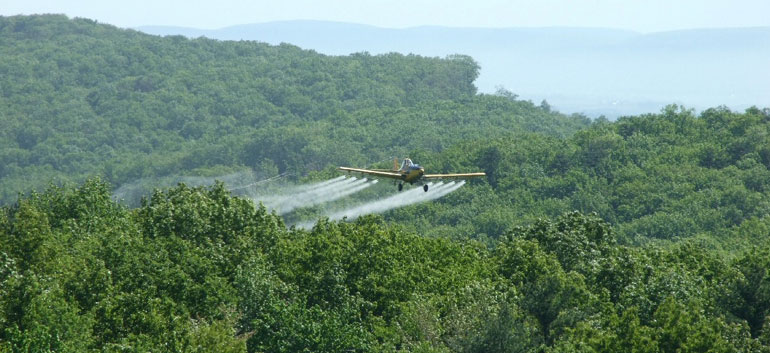Colombia has announced it will continue US-funded glyphosate spraying after it was temporarily suspended following an alleged FARC attack on two aircraft which killed a US pilot and injured two.
The alleged FARC attacks occurred on September 27 in the state of Caqueta and on October 5 in the state of Putumayo, located in the south-west of the country. In both incidents, the fumigation aircrafts were reportedly shot down by the FARC.
The program will resume on February 15 in the state of Putumayo after a suspension period of four months following the deadly attacks.
This year, aerial spraying will mainly take place in the states of Putumayo, Norte de Santander, Antioquia, Choco, Caqueta, Meta, Guaviare and Narino, Narcotics Police told newspaper Vanguardia.
Police Chief of Narcotics, General Ricardo Restrepo, has confirmed the date, but said manual removal will continue on January 26, according to the Colombian newspaper.
The technique of aerial spraying has caused much controversy as studies show the mixture can have a harmful effect on humans and animals as well as the environment.
Chamber Representative Guillermo Rivera Florez has proposed a permanent suspension of aerial spraying in the country. He told Vanguardia that the alternative practice of manual removal of crops would eliminate the hazardous effects spraying has on humans.
Last year, Ecuador, which borders Colombian states highly affected by coca cultivation and spraying, filed a complaint with the International Court of Justice. But withdrew the complaint, after an agreement between the two states was made. Colombia paid Ecuador $15 million in compensation and agreed to comply with the following conditions.
MORE: Colombia and Ecuador reach agreement over aerial coca spraying
“Colombia will not spray from more than 40 meters high and will respect a 10 km distance from of the Ecuador border. The exclusion zone will be reduced to 5 km the second year, and to 2 km the following year, as long as the Binational Scientific Commission ensures that the herbicide does not reach the border.”
In addition to the following conditions, Colombia has agreed not to change the mixture used in the spraying and is obligated to inform Ecuador 10 days in advance if spraying will occur in the areas surrounding the Ecuador border.
This is the first time that spraying has been suspended since the US-funded program started in the 90’s.


